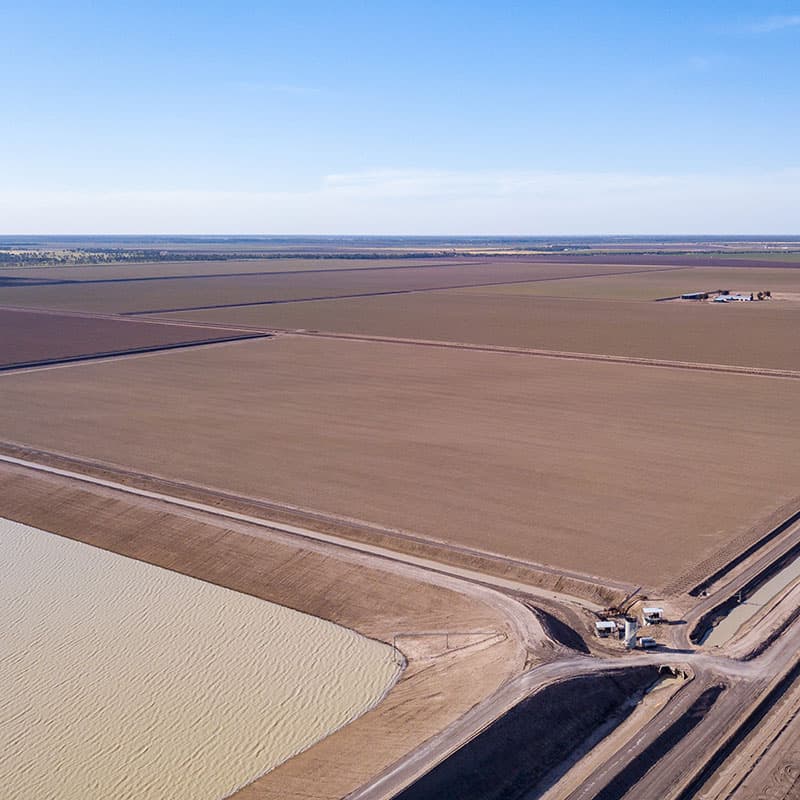A new ‘intelligent’ device from Novecom will put irrigators on the front foot when it comes time comply with the NSW floodplain harvesting policy.
The NSW Floodplain Harvesting Policy sets out the process for bringing floodplain harvesting into the water licensing framework. It involves creating new work approvals, licences, rules and ways of measuring floodplain harvesting so that the harvesting take can be managed within the legal limits. Under the policy, landowners who harvest water from the floodplain will be required to undertake measurement of the amount of water taken.
The basic steps required to comply with the policy include contacting a duly qualified person (DQP) and commencing the process of selecting the equipment, establishing a survey benchmark, installing a compliant storage meter and a compliant local intelligence device (LID).
While the dates and technicalities around implementing the policy are currently uncertain due to the disallowance of the amendments to the Water Management (General) Regulation 2018 that relate to floodplain harvesting, plenty of landowners and DQPs still have questions about just how the measurement technology will work, where they can find it, and how they can procure ongoing support.
“There are only about two dozen trained DQPs, so they’ve got their work cut out for them. The DQPs are your first point of contact when it comes to implementing a measurement system” says Jeremy Pola, Managing Director of Novecom.
Novecom – part of Emergent Group – has been a specialist in environmental monitoring for over 15 years. They’re national leaders in integrated data acquisition and reporting systems. When they heard about the legislation, they knew it was an ideal opportunity to utilise their existing skills to develop the necessary new technology landholders required. Whereas there are several storage meters already available on the market, the floodplain harvesting LIDs are still in their early days. The Novecom LID– named the Synaptix LID – will provide a compliant best cost option for landholders to comply with the Policy. The SynaptiX LID offers a turnkey solution to power, communications and data acquisition. Basically, it is as simple as connecting the storage meter and turning the LID on.
Having worked extensively in the field of environmental and natural resource management, Novecom already holds a range of products which can communicate complex data to a central hub, as well as the engineering expertise required to install, maintain, and customise these devices according to the needs of the client. They set about developing a turnkey solution which would meet these new legislative requirements.
“We have a tendency where, if we can’t find what we need, we’ll develop our own system. As system integrators, that’s what we do – we take the best of what’s out there and stitch that into what we need,” explains Jeremy.
While the team were able to leverage their existing remote environmental monitoring expertise, as well as their experiences working with the NSW Department of Planning, Industry and Environment, they knew they also had to be especially well versed in the new legislation and its requirements, as well as any challenges facing DQPs and landholders. Brian O’Donnell, Novecom systems engineer, underwent the DQP training himself.
The resulting product is a turnkey package. “There’s the LID itself doing the data acquisition and telemetry functions, a solar-battery power supply and a mounting frame. The solution is offered as a single unit so all a DQP needs to do is turn it on. Once that’s all in and operating, the data will move automatically to the NSW Government data acquisition system.”
Beyond its simplicity and functionality for floodplain harvesting, a key differentiator of the SynaptiX LID is it is part of the SynaptiX product ecosystem, so it has the capacity to be paired with a range of other sensors and can be customised to gather a variety of data for the end user.
“Most hardware vendors will have proprietary software in their product already, so you can’t really customise that. They’ll also have a fairly constrained lists of sensors you can attach – in most cases there’ll probably only be one.”
“With the SynaptiX solution, there’s potential for people to learn more about what’s happening on their property, so they can operate a better business,” says Jeremy.
For further information see the SynaptiX LID webpage or contact us at mail@novecom.com.au or call on +61 2 4924 5460.
